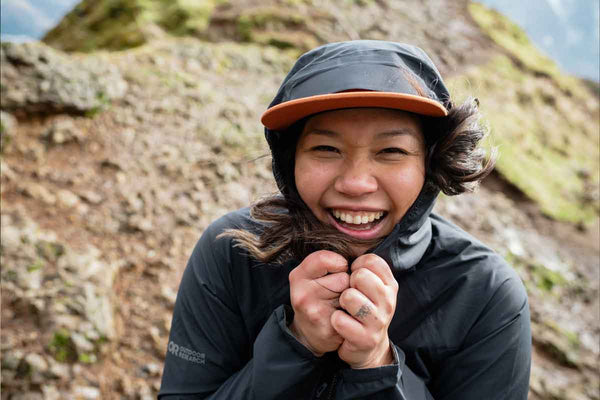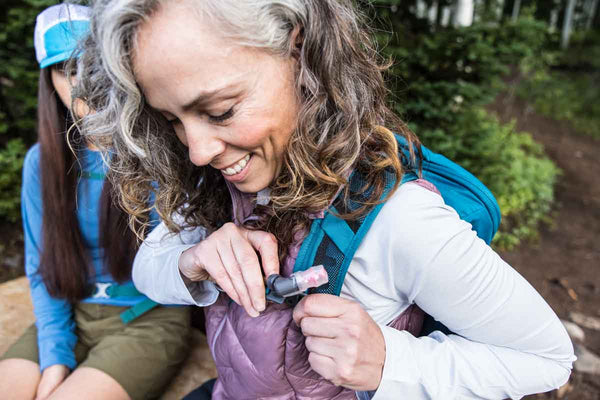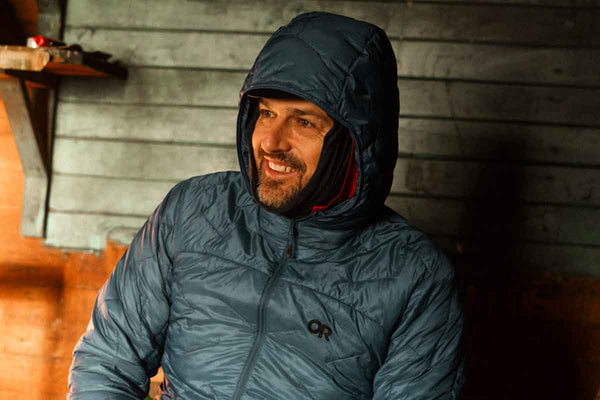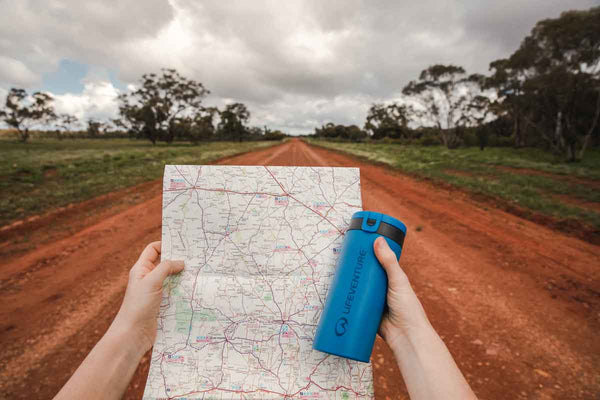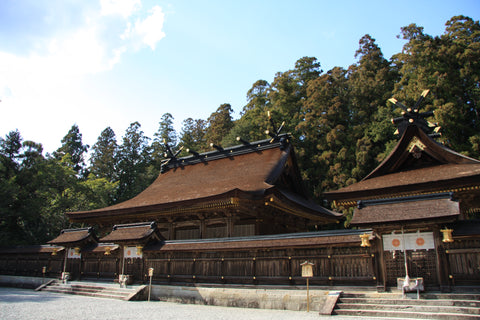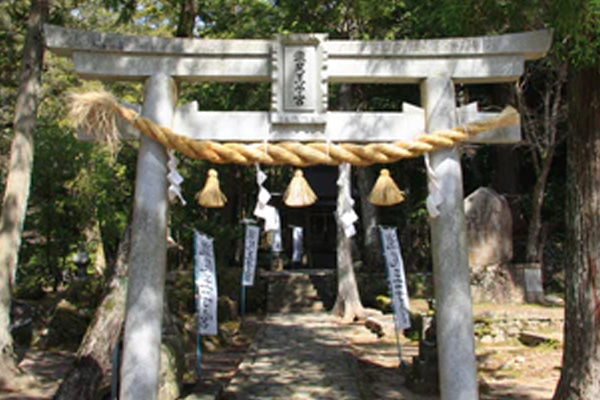
Trekkin' & Travellin' Japan's Kumano Kodo, Part I
by Michael Smigielski
Introduction
After years of admiring many aspects of Japanese culture (the elevation of everyday routines, such as tea preparation, to the level of a meditative art, as well as and in particular the rich Japanese food culture), I discovered one day not long ago that ridiculously cheap flights to Japan were now available, so I acted quickly and booked a flight to Kansai International Airport, just south of Osaka. I had three weeks and, at the moment of booking the flights, no idea what I’d be doing apart from trying as many foods as possible, and eating as much ramen, izakaya fair, and soba as my stomach could handle. The five months before my departure slowly expired until I was left with 4 weeks, and I decided I needed to do some research.
Looking for hikes around the Kansai area and noticing the wanderings of another friend of mine, I stumbled upon the Kumano Kodo, and my 3 weeks in Japan suddenly had a focal point, a foundation. I’d be doing the Nakahechi Route - a four day hike starting at Takijiri-oji, heading inland to Kumano Hongu Taisha, and culminating south at the temples, shrines, and waterfall of Nachisan.
Background
The Kumano Kodo is a series of pilgrimage routes throughout the Kii Peninsula, most of which lead to, or pass by, Kumano Hongu Taisha, a grand shinto shrine (one of three) in the heart of the Kii Peninsula in southern Kansai, Japan. Although there are multiple routes under the Kumano Kodo umbrella, the most frequently done route and by far the most popular - The Nakahechi - has become known outside of Japan as the Kumano Kodo.
Day One - Takijiri-oji to Chikatsuyu
I awoke early to catch the train from Namba Station in Osaka to the coastal town of Kii-Tanabe, from where I’d take a bus to the Takijiri-oji trail head. Japanese trains are unlike anything we have here in Australia: spacious, comfortable, and most importantly, reliable. The ride down the western coast of Kansai passed through tiny fishing villages, rolling hills thick with deciduous trees, and all kinds of strange, uniquely Japanese architectural oddities.
The start of the Nakahechi route is very unassuming. A bridge across a river, a Kumano Kodo information centre where you can get maps and stamp books, and an enthusiastic lady selling umeboshi (dried and salted Japanese plums) and last minute snacks to hikers and pilgrims soon to begin. Just to the left of her shop, stands a shinto torii marking the start of the trail.
Day one weaves through thickets of Japanese cedar (hope you like Japanese cedar!) and up steep paths towards the rural town of Takahara and onwards to Chikatsuyu. Apart from the umeboshi lady and lovely Japanese couple who, noticing I wasn’t from around here, couldn’t let the opportunity pass to take a photo with me in front of the torii before beginning their day’s walk, I came across no one on the trail. Sun filtered through the stands of perfectly straight conifers, and the realisation of where I was and what I was doing made me smile uncontrollably.

I had my first break On arriving in Takahara, enjoying a healthy lunch of chocolate covered almonds and some kind of enormous Japanese citrus while taking in the view of the town and surrounding mountains. I rested for 20 minutes or so, then continued onto the town of Chikatsuyu, an idyllic village alongside the Hiki-gawa river.

Just before entering the town, I stopped by the final Oji (subsidiary shrines of the three grand kumano shrines) of the day and found out where the town got its name: An emperor many centuries ago, while heading towards Kumano Hongu Taisha, broke a reed to use as makeshift chopsticks and noticed a viscous, red fluid appear, so he asked, Chi (blood) ka (or) tsuyu? (dew). And there you have it.
At Blood or Dew I make my way to Minshuku Chikatsuyu, a family run guesthouse by the river, next to the local onsen. This was my first stay at a minshuku (traditional guesthouse, though more relaxed and less formal than a ryokan) during my trip, and what an excellent way to start! The couple who owned the minshuku were incredible cooks, and dished up the best feed I had during the entire four day hike. Japanese people love their food and seem to take great pride in presenting an abundance of small dishes of the highest quality, prepared and cooked simply, yet with great technique and creativity. Again, that desire to elevate everyday things like dinner to something special.
Chikatsuyu also marked my first experience in a Japanese onsen. I’m generally not overly thrilled about getting naked in a room full of men, but if you want to experience as much of Japanese culture as you can, then relaxing in an onsen can’t be missed. Fortuitously, I opened the doors to the onsen and the steam from the thermal waters parted, gifting me with an empty room. I had the entire onsen and the view out over the river to myself. There’s probably no better way to end a day of hiking then by taking off your backpack, stripping down, and bathing in hot, mineral rich water welling up from deep underground.
After the onsen I changed into a yukata (a kind of robe one wears in a minshuku or ryokan), had dinner, and chatted with a few of the other hikers staying at the guesthouse over saké (rice wine) and umeshu (sweet liquor made from ume - Japanese plum). The night fell, the river beside us shone, and by about 9pm we were all asleep.
Day 2 - Chikatsuyu to Kumano Hongu Taisha
An early start today, as today’s section would be the longest of the four days - roughly 26km. We awoke at 6am for breakfast and professionally-brewed pour over coffee (yeah, the Japanese do mad coffee too), and were out walking by 7am. Being mid-march, the temperature was somewhere around 8°C (it had snowed a few days earlier) but the sky was clear and the morning light crisp, and already birds of prey were gliding above the nearby fields.
The first few kilometres were through Chikatsuyu and other nearby villages, walking on narrow asphalt roads. Many people choose to skip this part and catch a local bus to Kobiro-oji where the dirt trail picks up again, which reduces the day’s hike to 19km. There was actually a group of friends from the Philippines staying at the minshuku who were doing exactly this. We chatted at breakfast and I joked that I’d see them again in a couple of hours, once I had caught up with them. Although the asphalt section isn’t the best for hiking, it does highlight one of the key features of hiking the Nakahechi route of the Kumano Kodo: that it’s as much about meeting local Japanese people and experiencing Japanese culture and spiritual beliefs (shinto and buddhism) as getting out into nature and hiking in remote areas with stunning scenery. It’s a wonderful balance of the two. So I decided to walk the entire length a) why the hell not? I’ve got the whole day and when will I be here next? b) if I’m going to walk the Nakahechi route, I want to walk the entire Nakahechi Route, and c) I actually quite like watching tiny villages awaken, the first stirrings of the day, and seeing how rural communities in the Japanese hinterland live.
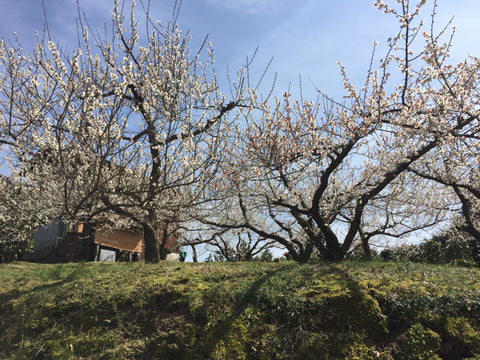
One of the first things one notices about Japan is that the homes are tiny, but sufficient. This goes for people living in the city as well as in the country. Also, everyone is growing some kind of food. Be it a square metre plot of spring onions or an entire field dedicated to rice and cabbage, they’re growing something. Walking from Chikatsuyu to Kobiro-oji there were ume orchards, groves of citrus, and everywhere cherry blossoms heavy with buds, beginning to unfurl the first flowers of the season. In many if not in all of these towns you’ll also come across what look like comically-oversized letter boxes filled with fruit, eggs and other farm-grown edibles. They’ll simply be laid out on display, a sign with how much everything is, and if you want something, just put your coins in the cup and enjoy!

The first 7km done, I arrived at the trail proper and made my way back into the steep cedar forest. This part of the hike between Kobiro-oji and Hosshinmon-oji was very similar to the first day, with quite a few ups and downs through stalls of perfectly straight Japanese cedar. With no one else on the trail, I forged on ahead and approaching midday I thought it might be a good time to start refuelling with the bento box packed with onigiri, egg, fried chicken and salmon which the guesthouse had prepared for me. Seeing the sun tumbling down and illuminating the mountainside up ahead, I walked into a clearing and noticed a group of people sitting down in a nice spot about 100 metres away. As soon as I came out of the forest I heard a rush of cheers and a wave of hands, and realised it was the group of Filipino friends from the guesthouse. In complete disbelief, and noticing they found the sunny hillside an ideal spot for a break too, I wandered over and joined them for lunch.
After lunch, and with the steep ascents of the day behind us, we began the gently descending trail to Hosshinmon-oji and onwards to Kumano Hongu Taisha. Hosshinmon-oji is one of the most important Oji’s (subsidiary shrines) of the entire Nakahechi route, as it marks the outermost entrance to the sacred region of Kumano Hongu Taisha and from this point, as you descend into Kumano Hongu Taisha, you notice the vegetation change from sparse deciduous forest to lush ferns and a dense understorey.
Setting eyes on Kumano Hongu Taisha one may be underwhelmed, especially if emphasis has been placed on the destination rather than the journey. Hongu Taisha is, as far as shrines go, quite modest in appearance, though also maintains a kind of austere grandness, and no doubt hides ingenious feats of design which will pique the eye of those in the know. As for myself, I had two things on my mind: catching the last bus to Kawayu Onsen, and finding some matcha ice-cream. Thankfully I succeeded in both of those objectives, and caught the last bus of the day to the riverside onsen town of Kawayu, known for its particularly hot water. After being shown to my room at the Ryokan, I quickly dropped off my gear, changed into my board shorts and headed to the outdoor onsen located on the banks of the river. Expecting scorching water, hot enough to boil eggs (which they do, nine minutes for hard-boiled I believe), I wasn’t disappointed. After five minutes in the scalding water, not able to take any more, the other bathers and I would run to the icy cold river and plunge in, only to repeat the process in reverse.
As dusk approached, utterly relaxed and warmed to the bone, I took in the views of the river from the footbridge above, the fading light imparting a silver shimmer to the rippling surface, and after a short while, emptied of thoughts and mind clear, I made my way back to the ryokan for dinner. Rice, miso, endless cups of tea, and a never-ending parade of dishes that came out one after the other, some of which I’d never tasted nor seen before (think octopus set in egg custard, served inside a hollowed-out orange), and doubt if I ever will again.
Sufficiently sated and refuelled after the day's walk, eyelids heavy and the tatami calling, I lay down and turned on the television, hoping to find the sumo wrestling championships which were taking place in Osaka, but within minutes was out cold.
Tune in soon for Part II!

